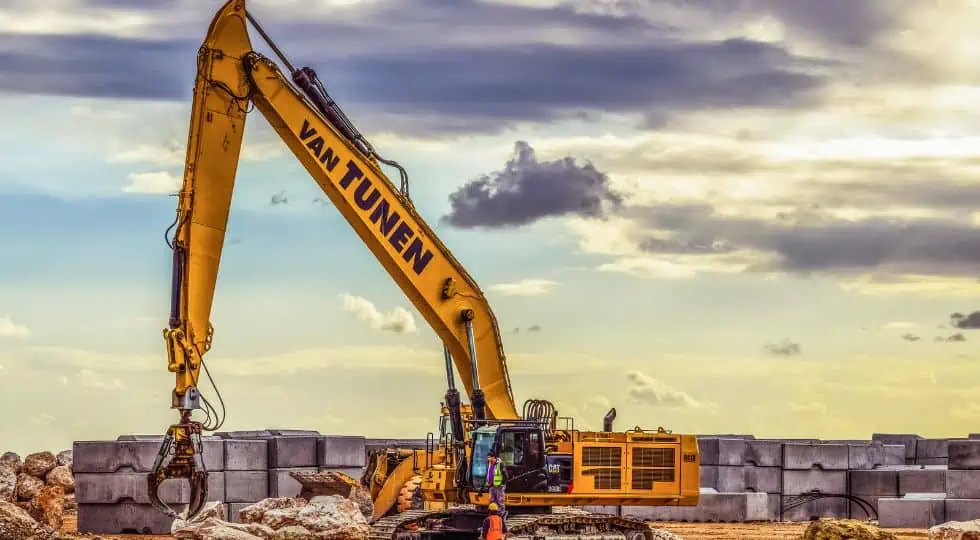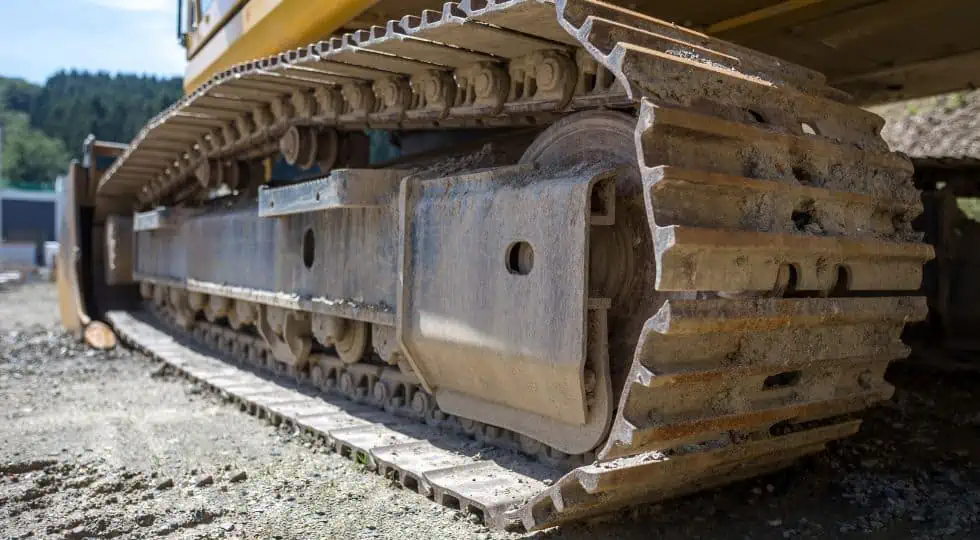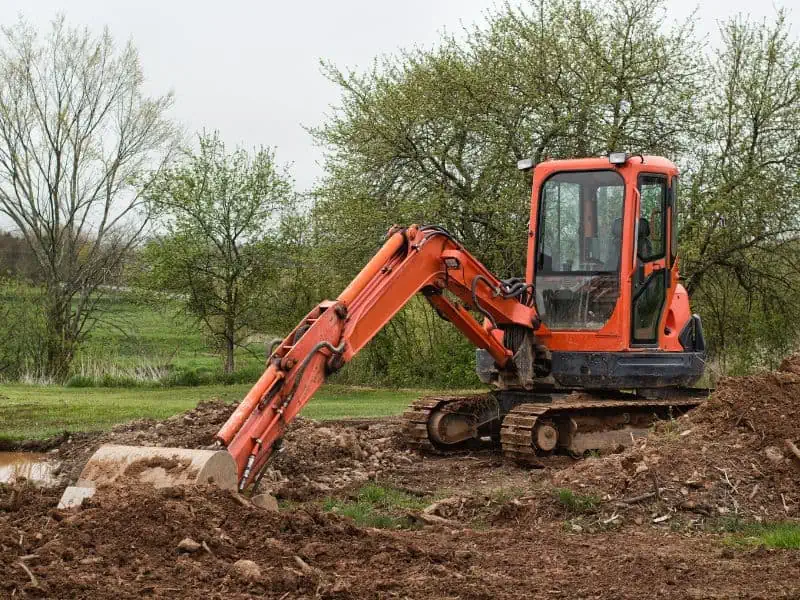Un vaste outil de construction, un excavatrice, est utilisé pour excaver et transporter des tonnes de terre, de roches et d’autres matériaux. Mais quels sont les principes de fonctionnement d’une excavatrice ? Le principe de fonctionnement d'une excavatrice implique plusieurs composants, notamment le système hydraulique, le moteur, la flèche, le bras et le godet.
Le système hydraulique d'une excavatrice est chargé de superviser et de gérer les différents accessoires de la machine, tels que la flèche, le bras et le godet, lors de différentes opérations telles que creuser, tirer et marteler. Ce système est alimenté par un moteur qui entraîne une pompe hydraulique, qui pompe ensuite en continu de l'huile vers plusieurs cylindres et moteurs hydrauliques.
Des godets de différentes tailles ont été fixés à l'extrémité des bras de la pelle pour effectuer différentes fonctions telles que creuser, charger et décharger différents matériaux. Chaque pelle dispose d'un système hydraulique que l'opérateur contrôle pour différents travaux avec une flèche. L’opérateur peut contrôler la longueur du bras avec l’option de commande en main.
Table des matières
BasculerUne pelle est propulsée par quoi et comment ?
La plupart des excavatrices sont équipées de moteurs diesel dotés de puissances différentes pour accomplir différentes charges de travail. Chaque moteur diesel a une puissance différente selon sa capacité de travail. Une puissante pompe hydraulique qui pousse l'huile vers son système hydraulique pour faire fonctionner la charge de travail en tirant, poussant, creusant, etc.

Le système hydraulique de la pelle est chargé de convertir l’énergie du moteur en mouvement des différents composants. Le système hydraulique se compose d'une série de tuyaux, de cylindres et de vannes qui fonctionnent ensemble pour contrôler le débit d'huile et le mouvement des différentes pièces de la pelle.
L'opérateur de la pelle utilise un ensemble de commandes pour manipuler le mouvement des différents composants. Le moteur alimente le système hydraulique de la pelle, qui à son tour alimente le mouvement des différents composants, permettant ainsi un creusement et une manutention efficaces des matériaux dans la construction et d’autres industries.
Le bras de la pelle
Le bras de la pelle, également connu sous le nom de flèche, est l’un des composants essentiels d’une pelle. Il s’agit d’un bras long et incurvé qui s’étend de la base de la machine et est utilisé pour creuser et atteindre des matériaux. Le bras de la pelle se compose de plusieurs sections qui peuvent être déployées ou rétractées à l’aide de vérins hydrauliques.
La première section est la plus grande et s’appelle la flèche principale. Il est relié à la base de la pelle et constitue la longueur principale du bras. Le bâton apposé au sommet de la flèche primaire vient ensuite. Le bras est plus court que la flèche principale et offre une portée supplémentaire au bras de la pelle.

Au bout du bâton se trouve un seau utilisé pour creuser et ramasser des matériaux. Vous pouvez attacher le seau au bâton avec une charnière, ce qui lui permet de monter et descendre. L’opérateur de la pelle utilise un ensemble de commandes pour manipuler le mouvement des différents composants du bras de la pelle.
Traces d'excavatrice
Les chenilles, également appelées chenilles ou train de roulement, sont un autre élément essentiel d'une excavatrice. Les chenilles confèrent à la machine mobilité et stabilité, lui permettant de se déplacer sur différents terrains et de travailler dans des conditions difficiles.
Les chenilles d'une pelle sont en métal et sont reliées à la base de la machine. Les pistes sont constituées de plaques métalliques reliées par des broches et des bagues. Les chenilles sont entraînées par des moteurs hydrauliques qui entraînent des pignons à l’arrière de la machine.

L'opérateur de la pelle utilise un jeu de pédales pour contrôler le mouvement des chenilles. L’utilisateur peut modifier la vitesse et l’orientation de la pelle en appuyant sur les pédales.
Les chenilles d'une excavatrice sont conçues pour assurer la stabilité et la traction sur divers types de terrains, notamment les sols meubles, les rochers et les pentes. Les chenilles peuvent également être ajustées pour fournir différents niveaux de pression au sol, ce qui est essentiel lors du travail sur des surfaces délicates.
Différence entre les différents principes de fonctionnement des pelles
Les excavatrices sont des équipements de construction lourds qui creusent, déplacent et enlèvent la terre, les roches et autres matériaux. Il en existe de différentes tailles et conceptions, mais toutes les pelles fonctionnent selon le même principe de base : le système hydraulique.

Cependant, il existe différents types de pelles et leurs principes de fonctionnement. Voici quelques-unes des principales différences :
- Excavatrice standard :Une pelle standard est le type de pelle le plus courant et elle fonctionne en utilisant une flèche, un bras et un godet pour creuser et déplacer les matériaux. L'opérateur actionne l'équipement à l'aide de poignées et de pédales hydrauliques assis dans une cabine.
- Excavatrice longue portée :Une pelle longue portée est conçue pour travailler dans des zones difficiles d'accès. Elle est dotée d'un bras et d'une flèche plus étendus, ce qui lui permet d'aller plus loin qu'une excavatrice standard. Ce type de pelle est couramment utilisé pour le dragage et le nettoyage des plans d’eau.
- Mini-pelle :Une mini-pelle est une version plus petite de la pelle standard et elle est conçue pour travailler dans des espaces restreints. Il a une conception compacte et un seau plus petit, ce qui le rend idéal pour creuser dans de petites zones telles que les cours et les jardins.
- Excavatrice à dragline:Une pelle dragline est une pelle plus importante utilisée pour les opérations minières lourdes. Il fonctionne à l'aide d'un godet dragline suspendu à un système de flèche et de câble. Le godet est abaissé dans le sol puis ramené vers la machine, tirant le matériau vers le haut et hors du sol.
- Excavatrice aspiratrice :Une excavatrice aspiratrice est une excavatrice unique qui utilise de l’air ou de l’eau à haute pression pour détacher et enlever les matériaux. Il est doté d'un grand tuyau utilisé pour aspirer les matériaux et est couramment utilisé pour les travaux d'excavation dans les zones urbaines où les méthodes d'excavation traditionnelles ne sont pas pratiques.
- Pelles hydrauliques:Ces pelles utilisent la puissance hydraulique pour contrôler le bras, la flèche et le godet. Une pompe hydraulique pompe l'huile à travers les conduites hydrauliques pour déplacer les différentes pièces. Ils sont fréquemment employés dans la construction et la démolition en raison de leur solidité et de leur rapidité.
- Excavatrices à câble :Ces excavatrices utilisent des câbles et des treuils pour déplacer le bras et le godet. Elles sont moins courantes que les pelles hydrauliques et sont souvent utilisées dans des situations où l'énergie hydraulique n'est pas disponible ou peu pratique.
- Pelles sur pneus à godets :Ces excavatrices utilisent une grande roue avec des godets attachés. La roue tourne et ramasse le matériau, puis le déverse sur un tapis roulant. Ils sont couramment utilisés dans les opérations minières.

Conclusion
En conclusion, excavatrices sont des outils essentiels largement utilisés dans les secteurs du bâtiment, des mines et autres. Ils sont propulsés par des moteurs diesel et utilisent des systèmes hydrauliques pour faire fonctionner les différents composants, notamment le bras et les chenilles de la pelle. Le bras de la pelle, composé de la flèche principale, du bras et du godet, est utilisé pour creuser et déplacer les matériaux, tandis que les chenilles confèrent à la machine mobilité et stabilité. L'utilisation d'une excavatrice implique une formation appropriée, de l'expérience et le respect des consignes de sécurité pour garantir le fonctionnement efficace et sûr de la machine. Tu peux Contactez-nous si vous souhaitez plus d'informations sur les principes de fonctionnement de la pelle.
